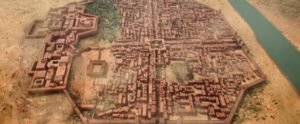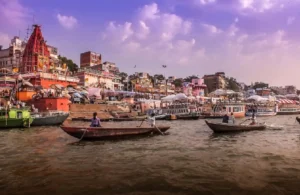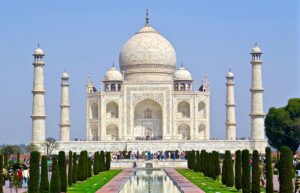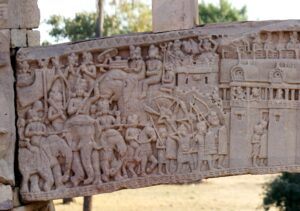India the Golden Bird: Bharat Ek Sone ki Chidiya
Greetings, dear reader! If you happen to be born in India, you’ve likely come across the fascinating tale of our country being referred to as the “Golden Bird” in ancient times. Back then, India was so prosperous that people affectionately called it the golden bird. This glory is also depicted through the hymns of Rig Veda, describing India as a land of divine beauty and abundant prosperity.
🌟सुवर्णरूपा या विश्वस्य भूमिर्या वाजिनीवती। या सधूमती सुवर्णा देवी वाजिनीव उपसुस्र्वति।।🌟
Even if you delve into your forefathers history, you might stumble upon instances where people used copper pots in daily use, lived alongside horses, cows, and elephants, and engaged in acts of donating land and wealth, all based solely on their words—a rarity in today’s world.”
However, this golden era took a hit. Massive looting, plundering, and the struggle for independence transformed India from a land of wealth into a symbol of poverty. However, the saying, “India, the Golden Bird, or Sone ki Chidiya,” still holds true today in many ways when we engage in conversations with people and feel their emotional connection to this historical narrative.
In this blog, I, as your humble author, aim to shed light on India’s journey as the “Sone ki Chidiya.” Together, let’s explore why it earned this title, how it has evolved over time, and the challenges it has faced. So, join me on this enlightening expedition as we seek to understand the essence of India.
Origin of ‘Sone ki Chidiya’📜
The precise origin of the term “Sone ki Chidiya” (Golden Bird) is challenging to pinpoint, as it has likely evolved over centuries and been used in various contexts. The metaphor gained prominence during periods in India’s history when the region was considered exceptionally wealthy and prosperous. Sone ki Chidiya (The Golden Bird) was not just a symbol of material wealth; it represented a flourishing civilization where art, science, and culture thrived. However, as the tides of time shifted, the subcontinent witnessed invasions, colonial rule, and socio-economic changes that transformed the once illustrious Golden Bird into a nation grappling with poverty
One early example of this metaphor can be traced back to classical Sanskrit literature. In works like Kalidasa’s “Shakuntala” and various Puranas, there are references to the richness and beauty of the Indian subcontinent, sometimes using metaphors involving gold or birds.
Also, one notable mention of India as a glorious land comes from the famous work “Indica” by the ancient Greek historian Megasthenes. In this historical account, Megasthenes, who served as an ambassador to the court of Chandragupta Maurya, describes India as an incredibly prosperous and splendid land. He marvels at the wealth, vast resources, and advanced civilization of India, portraying it as a golden land of opulence.
Here is a quote attributed to Megasthenes:
“India, being of enormous size and resources, possesses countless riches, which make it the most prosperous of all lands. The wealth of India, both in quality and quantity, is unrivaled and exceeds that of any other known country.”
While it’s challenging to pinpoint the exact moment when the term was first used, it has been ingrained in the cultural and historical narrative of India for a long time, symbolizing the nation’s historical affluence.
India’s Historical Wealth:
Sone ki Chidiya: The golden bird during the ancient period
During the ancient period in India, the metaphorical “Sone ki Chidiya” or Golden Bird symbolized a realm of unparalleled wealth, prosperity, and cultural magnificence. This era, spanning thousands of years and encompassing various civilizations, unfolded as a tapestry woven with economic abundance, flourishing trade, and profound cultural achievements.
.

The Flourishing Fields: Agricultural Prosperity
During the ancient period, India gleamed as the metaphorical “Sone ki Chidiya” or Golden Bird, where the fertile plains of the Indus and Ganges River valleys were not mere fields but opulent landscapes yielding harvests that ensured self-sufficiency and cultivated economic stability. The abundant crops became the golden treasures bestowing prosperity and contentment upon the populace.
Trade and Commerce: A Global Marketplace
India’s vibrant trade and commerce, extending across the Silk Road and maritime routes, transformed the nation into a global marketplace. Local markets, akin to golden hubs, flourished with diverse goods, enriching the lives of the people and elevating the overall quality of existence. The allure of India’s wealth attracted traders from the Middle East, Southeast Asia, and Europe🌍.

Urban Opulence: Cities as Golden Nests
Cities like Mohenjo-daro and Harappa were not just urban spaces; they were nests of the metaphorical Golden Bird. Their well-laid streets, advanced drainage systems, and architectural marvels created a higher standard of living for urban dwellers. The urban opulence reflected the wealth and prosperity synonymous with the Golden Bird.

Cultural and Educational Renaissance: Golden Feathers of Wisdom
The cultural and educational flourishing of ancient India, represented by centers of learning like Takshashila and Nalanda, became the golden feathers adorning the nation. These institutions were sanctuaries fostering skills, empowerment, and cultural richness among the people. The pursuit of knowledge and the acquisition of various skills created a sense of empowerment and prosperity.

Spiritual Well-being and Harmony: A Golden Aura
The ancient ethos emphasized not just material wealth but the golden aura of spiritual well-being and communal harmony. The teachings of the Vedas and Upanishads were not mere philosophies; they were the essence of inner happiness and social cohesion. The emphasis on spiritual values resonated globally, earning admiration for fostering a harmonious society.

Infrastructure as Golden Veins: Roads Connecting the Bird
The infrastructure, including Emperor Ashoka’s network of roads and highways, acted as the metaphorical golden veins connecting the Golden Bird. These veins facilitated not only efficient administration but also cultural exchanges, trade, and an elevated overall quality of life. The improved connectivity became symbolic of the prosperity and dynamism of the Golden Bird.
Global Recognition: A Resonance Beyond Borders
This era of ease and opulence was not confined within India’s borders; it resonated globally. Traders from the Middle East, Southeast Asia, and Europe sought India for its exotic spices, textiles, and gemstones. Foreign travelers marveled at the grandeur of Indian cities, and scholars from various parts of the world sought knowledge in the ancient centers of learning. India’s cultural and spiritual values, echoing beyond its borders, earned admiration for fostering a harmonious society.
Also, you can watch..https://www.youtube.com/watch?v=H_tDrKtvabc
Sone ki Chidiya : The golden bird during medival period
During the medieval period in India, the concept of “Sone ki Chidiya” or the Golden Bird persisted as a symbol of wealth, prosperity, and cultural opulence. This era, spanning roughly from the 6th to the 16th century, saw the rise and fall of various empires, contributing to the rich fabric of India’s history.
1. The Flourishing Delhi Sultanate:
The Delhi Sultanate, established in the early medieval period, played a pivotal role in trade and commerce. While specific GDP figures are unavailable but markets bustled with spices, silk, and gems, turning Delhi into a trade haven.
2. The Mughal Empire:
The Mughal Empire, particularly during the reigns of Akbar, Jahangir, and Shah Jahan, is estimated to have had a substantial economic output. The opulence of the empire, reflected in architectural marvels like the Taj Mahal, suggests a considerable accumulation of wealth.

3. Trade and Cultural Exchange:
India wasn’t just a country; it was a cultural crossroads where diverse influences mingled. Trade routes crisscrossed the subcontinent, bringing exotic goods and ideas. Spices from Kerala, silks from Varanasi, and gems from Golconda created a vibrant tapestry of cultural exchange.
4. Economic Prosperity and Taxation:
The Mughal rulers implemented economic policies that stimulated growth. Akbar’s revenue reforms and fair tax system likely played a role in ensured prosperity, with revenue flowing in from a harmonious balance of agriculture and trade.
5. Cultural Renaissance:
The medieval period witnessed a cultural renaissance that, contributed to the overall richness of the region. Art, literature, and architecture flourished, showcasing the cultural wealth of the time.
6. Centers of Learning:
Centers of learning played a crucial role in nurturing scholars and contributing to the intellectual wealth of the region. The Library of Salar Jung, established during the medieval period, housed manuscripts from various disciplines.

7. Decline and Foreign Invasions:
The later medieval period faced challenges with foreign invasions and internal conflicts, contributing to a decline in economic conditions. Exact GDP figures remain elusive, but historical records suggest a period of economic uncertainty. The metaphorical Golden Bird during the medieval period captures not only economic prosperity but also the cultural and intellectual richness that characterized India during this time.







One thought on “10 reasons why India was called Sone ki Chidiya-Bharat the Golden Bird”